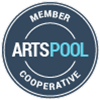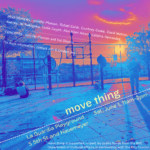On March 26 and 27 a group of artists and scientists convened at The New School for iLAND’s second annual Symposium. The event opened with presentations from renowned public artist and key note speaker, Mary Miss, followed by iLAB residents – StrataSpore; StEM, Phil Silva and Timon McPhearson’s urban forest mapping project; and iLAND’s own Artistic Director Jennifer Monson.

Pod Casts – Download audio from the lectures:
MaryMiss
StEM
StrataSpore
Jennifer Monson
Day 2 of the iLAND Symposium began with workshops led by Jennifer Monson, StEM and StrataSpore; the following is an overview of the small group discussions that followed the workshops. We invite you to help keep this dialogue moving forward by contributing your thoughts to the iLAND blog:
Relationship between Art and Science
Participants
Phil Silva – StEM, Greenbridge, Brooklyn Botanic Garden, The New School
Barbara Bryan – Dance Administrator, iLAND board of directors
Diana Crum – dancer, choreographer, teacher
Hannah Harpole – dancer, installation and film artist
E.J. McAdams – poet, iLAND board of directors
Natasha Rivett- Carnan- curating an exhibit in London
Amy Legendre- Dancer, choreographer, working in an art initiative for prisons
Clarinda MacLow- dancer, choreographer, bio chemist, micro biologis, Culturepush
Cindy Stevens – from Ithaca, dancer, choregrapher, degree in ecology
Jackie Dodd – dancer, choreographer, environmentalist
While it’s easy to find collaborators, it’s hard to push past the initial steps to continue the conversation.
Questions:
How do you define your collaboration? Has any one gotten past the initial phase? What do you find there? What kinds of people are drawn to collaborating?
Does the collaboration tend to stay peripheral to the central research? Are there benefits to that? What is at the margin? What goes unattended?
Impediments- scientists have a day job; does the art function as an appendage?
For the artist the collaboration may be their central project. How to manage different goals, levels of commitment and outcome?
Historically artists had made places like Muir Woods visible to the urban areas in and around San Francisco. The supervisor of the Muir Woods National Monument sees that art is part of creating the vision for the identity and purpose of Muir Woods.
Verbs that describe what both art and science do (for each other and together):
Filter
Translate
Weave
Sell
Teach
Learn – literacy in collaborator’s disciplines
Scientists are actually used to collaborating. Artists are used to “flying solo”
Scientists routinely collaborate, they also do creative problem solving
One complaint “ I just feel like I am helping you with the technical aspects” how to bring scientists into the ideas of creation? Artists experiment with information.
How do artists codify their “ magic” so that they can actually teach? It is ok to demystify.
How to further qualify the collaboration going into the situation versus ending up asking for a lot of help and feeling alone?
Are systems of making art more flexible then the systems of science?
Methodology of collaboration – are there such things as best practices? iLAND is archiving a history of past iLAB residency practices and methodologies. Example- the matrix created by NYC from a native plants perspective that created shared concepts through a matrix of definitions stemming from the language of ballet.
Challenges:
Cultural inequities between art and science
Financial inequities between art and science
It seems that culture comes first in framing how meaning is created in societies and that art and science are both needed to create and come to terms with shifting meanings. One could argue that the general public is much more informed through art and culture than through science? Why does science demand more resources? What is the role of pop culture?
Scientists are reaching out to artists to express the urgency of climate change. The scale of climate change is both so vast and so unnoticeable. Is this hard for artists to explain? It seems like the larger political and social frameworks that shape our attitude to climate change can be perceived and torn open and critiqued through art.
Are we in an era of Applied Arts? How do we create space for the indeterminate value of creativity.


Leave a Reply